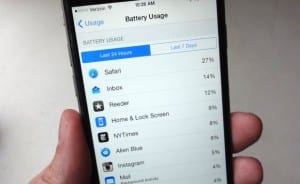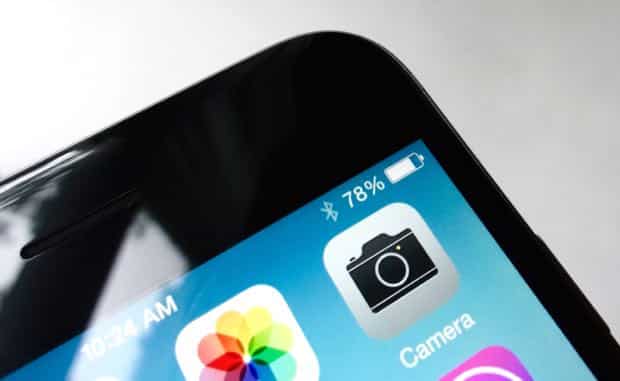When I first got my iPhone 6 about a year ago, I was pleasantly surprised by how well the battery held up. Even after an entire day of moderate-to-heavy use, my iPhone’s battery meter would still be in the green, with room to spare. And then things started to go downhill.
No longer was my iPhone making it through a full day with ease; indeed, I was regularly getting “Low Battery” warnings well before bedtime. If I dared to use my iPhone as a mobile hotspot while working remotely in the city, I’d be lucky to make it home before the battery up and died. And even when I barely used my iPhone, I’d notice the battery meter steadily dipping throughout the day.

There’s an easy way to pinpoint battery-hogging apps on your iPhone or iPad.
So, what was going on? Did I have a bad iPhone battery, or—more likely—was one of my apps being a battery hog? Luckily, there’s an easy way to find out.
If you tap Settings, General, Usage, then Battery Usage, you’ll get a list of all the apps that have been drawing power from your iPhone’s (or iPad’s) battery.
Related: 8 battery-saving tips for your iPhone
At the top of the list, you’ll likely see items like Safari, Mail, and other apps that you use all the time. What you’re looking for are apps that you don’t use that often, or anything that’s using a surprisingly large share of your battery. Find any? If so, you may want to consider evicting those power-hungry apps off your iDevice.
You’ll also see a few apps in the list with a “Background Activity” tag, denoting apps that are taking advantage of iOS’s “background app refresh” feature.
Background app refreshing lets certain iOS apps update themselves even when you’re not using them. For example, the Facebook app can go and silently update its news feed, the CNN app can grab the latest headlines, Twitter can download more tweets, and the Stocks app can check the latest stock prices, all without you ever opening the apps themselves.

Are too many of your iOS apps trying to refresh themselves in the background? Consider switching off that setting for some (or all) of them.
While background app refreshing is designed to use as little battery power as possible, too many apps trying to refresh themselves will take a toll on your iPhone’s battery life—particularly if there’s a specific app that’s using more than its fair share.
Want to see which of your apps are refreshing themselves in the background? Go back to the main Settings screen, then tap General, Background App Refresh.
Here, you’ll see a giant list of apps that support iOS’s background app refresh features, and most of them will probably be switched on.
My advice: switch off every app except those that you absolutely, positively need to be updated all the time. For example, maybe you want to make sure that Gmail is always checking for new messages, but you don’t really need Twitter to be constantly downloading the latest tweets. In that case, make sure to switch background app refreshing on for Gmail but off for Twitter.
Now, go back to using your iPhone or iPad and keep an eye on the battery meter. Is your battery holding out for a whole day again? If so, maybe the changes you made in your app settings did some good.

